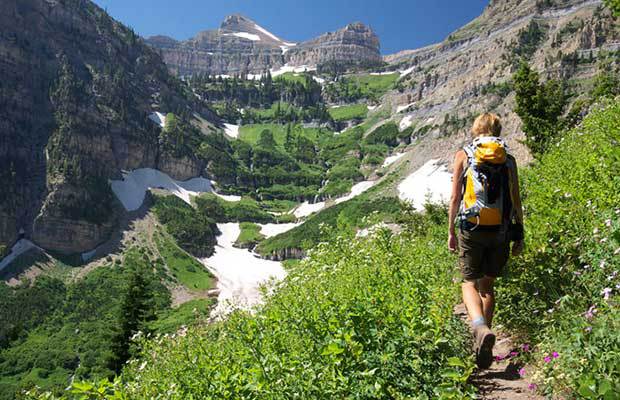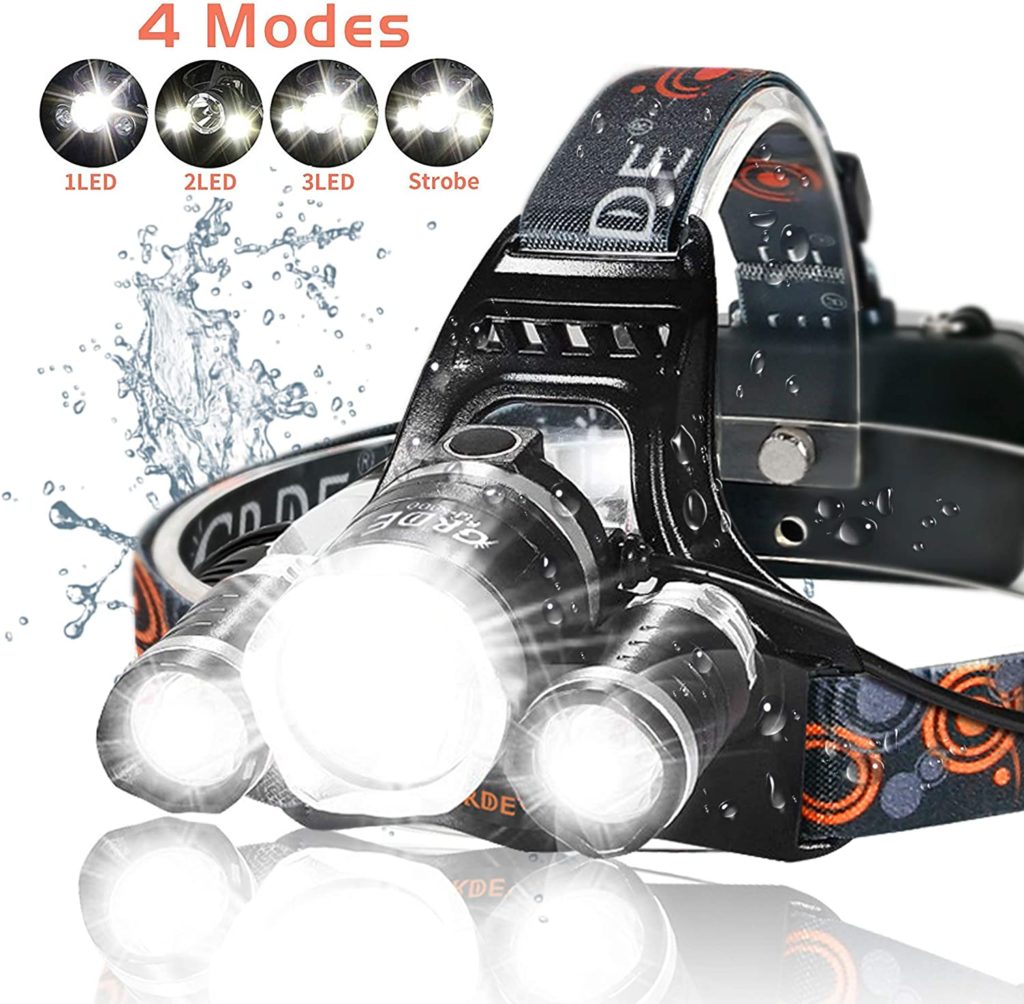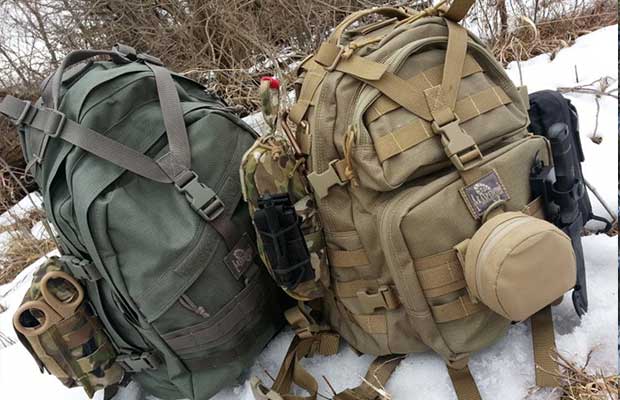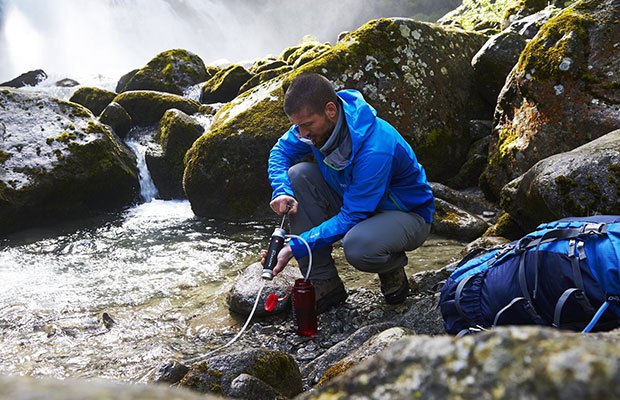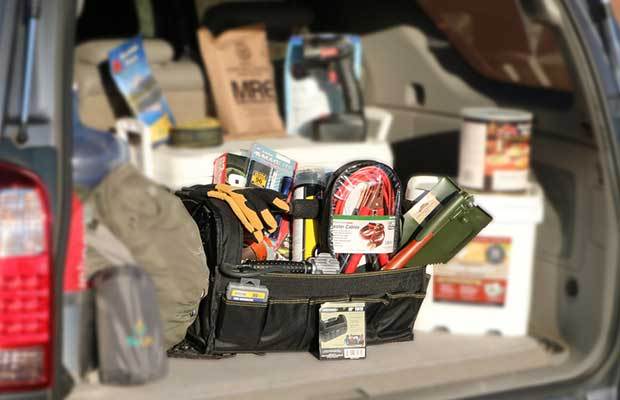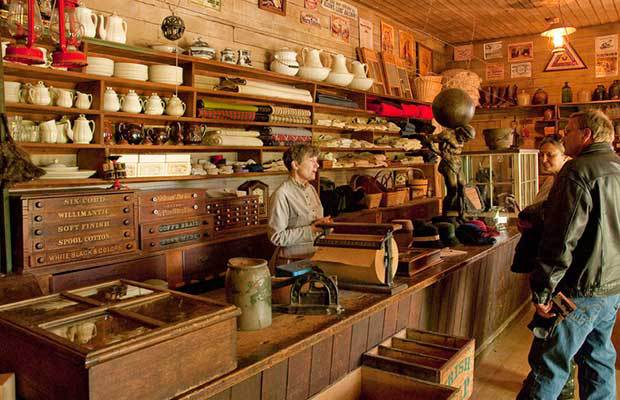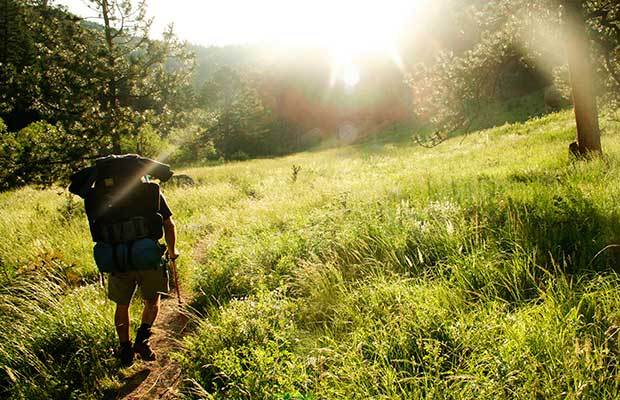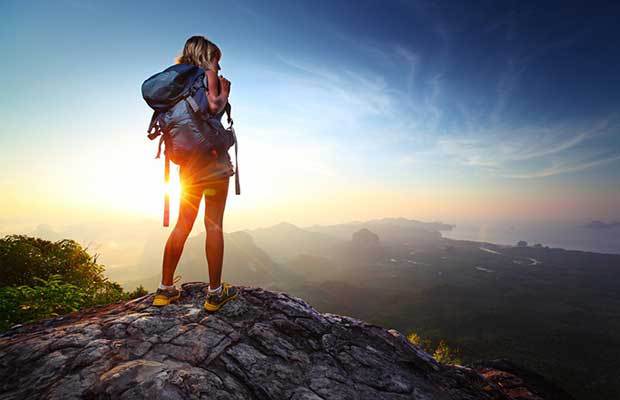
Planning a day hike can teach you so many skills that you can incorporate into your bug out plans. I have advocated that longer backpacking trips are extremely valuable for the lessons you can learn from them, which apply directly to any plans you have of strapping that heavy pack on your back and hiking into the local forest. A day hike gives you similar opportunities to learn, practice your bug out plan, and get some great exercise at the same time in the beauty of nature. What’s not to love?
You shouldn’t just walk into the woods unprepared though even when by definition; a day hike should have you home at night. Accidents happen and that is one reason why I am a prepper. I like to think that even small day hikes present opportunities for me to be able to take care of myself or my family if something unexpected happens. Do you think Aaron Ralston, famously portrayed in the movie 127 Hours didn’t plan to make it home that night he left? Aaron spent over 5 days trapped by a giant bolder and was only able to free himself by first breaking, then cutting off his own arm. Talk about survival!
Each year there are numerous people lost or stranded in the wilderness so it makes perfect sense to me to pack for unplanned visits to the woods.
All of that isn’t to say that I think you should bring your full Bug Out Bag with you, but for some of you that might be a good idea to see how it feels after a few hours. My wife and I did this before our first backpacking trip to try out items like our portable stove, water filtration items, eat some of the freeze-dried food we would live off of in the wilderness but most importantly to see how lugging our new backpacks full of gear felt. That short day hike taught us a lot about our packs so I put together this list below for any of you who might be considering the same thing on a day hike scale.
Day hike checklist
Feel free to print this day hike checklist off and use it for your own adventures. The items I list below are just suggestions. Where you live , the environment you will be experiencing on your day hike and personal abilities should all factor into your own choices, but this list should cover the basics needed for survival.
A day hike checklist will help you be prepared for unforeseen situations.
Navigation
Map and Compass – Who wants to get lost out in the great outdoors? Having a good compass and a map of your area are very important for anything but the shortest hikes in a National Park where the trail is well-marked and usually less than a few miles. Maps are more important if you aren’t familiar with the area, the terrain is treacherous, steep or the environment is harsher (think Grand Canyon). National Geographic Trails Illustrated Maps are excellent and usually available for most of the larger destinations. These maps are waterproof which is a huge plus if you sweat like a beast or are planning to ford the local river to punch your bad ass hiker card.
You also need to know how to use that compass and be able to read a map.
Sun Protection
Sunglasses – Sunglasses, especially polarized lenses are a must have if for nothing else than looking cool. Seriously, sunglasses will protect your eyes and keep you possibly from loosing your footing in the gaze of the setting sun.
Chap stick/Lip Balm –This is one thing that I never used to carry until I went backpacking in the winter one time. Usually I never use chap stick, but this one time I had a cold and my nose was stuffed up which meant I was breathing out of my mouth. Eventually, my lips were nice and chapped so some good lip balm, although it isn’t a life saver, sure makes the journey smoother. Yes I said that.
A good headlamp doesn’t have to cost a fortune and can be a lifesaver if you are walking in the dark.
Hat – I try to always wear a hat when I am in the woods. In the winter it is something to keep me warm like a toboggan or I can go Crocodile Dundee with my Outback Trading Company River Guide hat. Nothing beats one of these if you are caught in the rain. They also do an excellent job of keeping the sun off your face. In hotter weather a lighter option might be better like the OR Helios hat.
Protective layers – In the wintertime this is usually more of a thought but even in the summer I plan for something should the temperatures drop or I am forced to spend the night in the woods. This can be as simple as a capilene base layer or a shemagh. When you are hiking you are burning energy that keeps you warm. I try to plan for what I would want as clothing if I couldn’t move.
Light – Always have a light with you. My flashlight is part of my EDC kit and even sitting here at my computer, I have a flashlight on me. When I am going hiking I always take a headlamp as well because I think they are superior when you are walking in the dark. These come in all prices but you don’t have to spend a fortune on a good headlamp.
First Aid Kit – I don’t expect anyone to take the supplies to be able to suture their arm if they have to hack it off with a dull multitool, but a good first aid kit should always go with you. I have the ultralight first aid kit from Adventure medical, but I augment this with a tourniquet and an extra blood stopper bandage. We have had to break into the first aid kit on multiple occasions for simple cuts and scrapes to aspirin.
Ability to make fire – You may be forced to spend the night in the woods and if this happens to you it makes sense to have something to make a fire with. Normally if I am out on an official backpacking trip I have several methods just in case, but for day hikes I have a simple Bic lighter that I have wrapped about 3 feet of duct tape around just in case. This way I can easily start a fire if needed. I keep this in a waterproof case and obviously you can also take a magnesium striker as backup.
Tools – It may sound like overkill but I take a knife and my multitool. I don’t lug my big end of the world survival knife on day hikes but I have my favorite folder as well as my Leatherman which should cover just about any need I have. Even if that need is to saw a bone in half.
Food – A lot of people take off into the woods thinking they will be back in a few hours only to find themselves stranded for a couple of days. Now, you won’t die technically for a pretty long time from starvation but I always pack some food in my backpack . If the duration of the hike is longer, I will even pack an extra day’s meal. This can be as simple as an MRE although there are lighter options like a Freeze-dried pouch of something like my favorite, chilli-mac, or a few Cliff bars or some trail mix. Even if you don’t eat them, it is a good idea to have them just in case.
Water – This can be as simple as a bottle of water or a water bladder. I have grown to appreciate the usefulness (and capacity) of my Camelbak Antidote 100 oz. Plus, I don’t have to stretch my arms behind me or take off my pack to get a drink. If I am going to a new place then I also pack my Sawyer Mini water filter so I can resupply if needed. I haven’t had to use that yet as the Camelbak has always been enough for my hikes, but you never know.
Shelter – For me I usually just have the simple emergency mylar blanket or a survival bivvy . They aren’t perfect, but they are better than nothing. I wouldn’t likely put a sleeping bag in a day pack. You might argue that you should be able to build your own shelter and I agree, but what if you are trapped by a bolder or for some other reason aren’t able to build your favorite debris shelter? Options.
Extra items – Depending on the location I will take a GPS to back up my map reading. Sometimes I will take extra batteries for the electronics, but usually I just put fresh rechargeable batteries in there before we leave. Other nice to haves are dependent upon how much room I have in my pack like a mat for sitting down that I made out of a piece of reflective insulation material. It’s very lightweight and could even double as a signaling device. I will also take a trash bag sometimes because they, like duct tape have a lot of uses. My packs all have whistles as well. You will have other items you want to bring.
What items did I miss? What do you pack on your day hikes?


